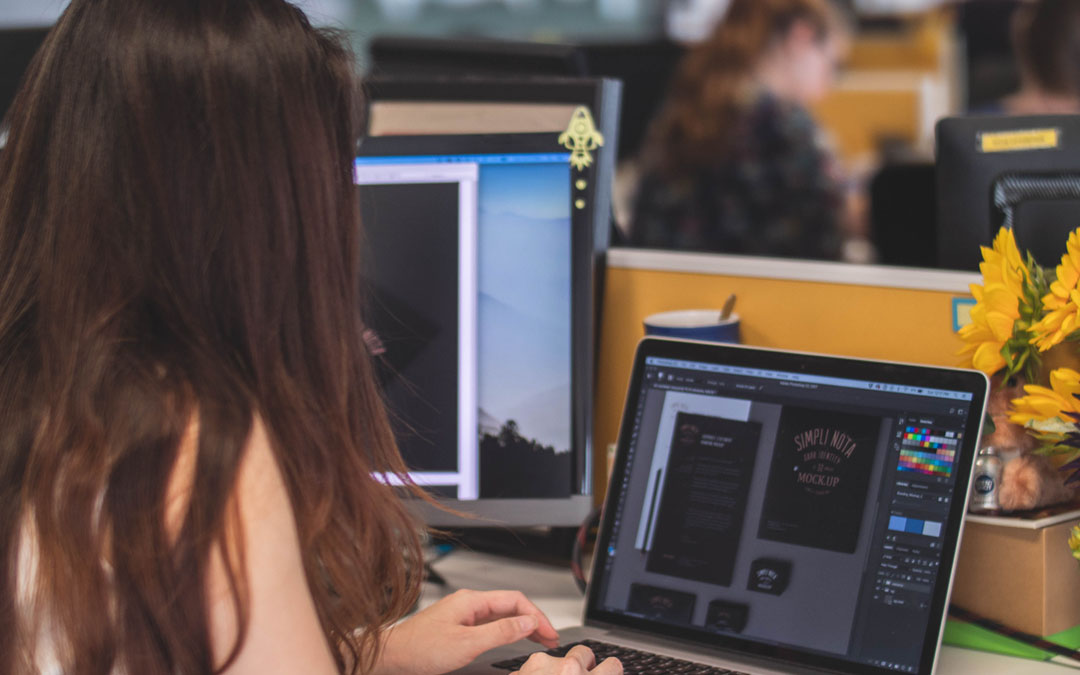Thanks to improvements in the capabilities of digital printing, custom packaging is in reach of more businesses like yours than ever before. No matter the size of your operation, you’re no longer limited to a plain brown box or coloured tissue paper that doesn’t quite match your branding. All it takes is your logo, a bit of imagination, and suddenly you’ve got the elements to some potentially eye-catching custom packaging artwork.
So how do you ensure those elements can be used? Here’s how to recognize if your graphics are ready to be used in custom packaging artwork.
What’s your file format?
Raster graphics are pixel-based. They group together tiny points of colour to form images. When you zoom in on them, you’ll notice they start to look blocky (aka pixelated). This means that as you make them larger, they’ll lose sharpness and detail.
They’re most often used for website images and printed photos.
Common Formats: JPEG, GIF, PNG
Vector graphics are path-based. They use math to connect points together to form lines and shapes. When you zoom in on them, they will always look the same. This also makes them scalable, so no matter how big or small you make vector graphics, they will maintain their sharpness and detail.
They’re most often used for creating logos, branding materials and non-photographic artwork.
Common Formats: EPS, AI, SVG
If you’re using raster artwork in your custom packaging, you’ll want the file to be as high resolution as possible. If you’re using vector artwork, it will print exactly as you see it on screen.
What’s your colour mode?
RGB (Red, Green and Blue) is used for displaying images on screens. A light source mixes the three colours together in varying ways to create any colour that’s needed. This process is called additive mixing, and it means colours start out as completely black on a screen. As red, green and blue are added, the darkness gains brightness and pigment. When all three colours are mixed together equally, they create absolute white.
A neat tidbit: the human eye sees in RGB.
CMYK (Cyan, Magenta, Yellow and Black) is used for printing images on materials. A printer mixes the four colours together in varying amounts to create a wide spectrum of colours. This process is called subtractive mixing, and it means colours start out as completely white. As cyan, magenta, yellow and black are layered together, the brightness reduces while adding pigment. When all four colours are mixed together equally, they create absolute black.
Designing for screens? Use RGB. Designing for print? Use CMYK.
What’s your image resolution?
DPI (Dots Per Inch) measures how many pixels are rendered in one inch of an image. The higher an image’s DPI, the more colours and details it contains (and the sharper it will print).
72 DPI is screen resolution and is used for graphics and images that live on the internet. It’s considered low resolution and isn’t ideal for printing (it will come out pixelated or blurry). On the plus side, it means a smaller file size, which makes for easier storing, uploading and downloading.
300 DPI is print resolution and is used for printed materials like photographs and magazines. It’s considered high resolution and ensures images print out sharply. It also means a larger file size, which takes up more storage space and increases upload and download times.
Designing for screens? Use 72 DPI. Designing for print? Use 300 DPI.
What format are your fonts in?
Fonts are small files that live on your computer and display the alphabet and other symbols in varying looks and styles. When saving your files for printing, the format your fonts are in is vital. Here’s why:
When your fonts are “live” or “editable,” their sizing, colouring, lettering (and font choice) can be changed during designing. Using a specific font means you must have the actual font on your computer. If you send your custom packaging artwork to a printing company with live fonts, and they don’t have that font installed on their system, it will not print out the way you intended. So how do you fix that? You outline your fonts.
When your fonts are “outlined,” they’ve been turned from editable text into shapes that no longer need the font file to render them. This means they’ll look and print exactly as intended, whether viewed on your computer or the printer’s computers.
This, of course, means you can’t go back and change your fonts or text. Make sure you always keep a copy of your custom packaging artwork with editable fonts in it. This way you can come back to it and make changes later.
Lastly, when in doubt—reach out!
If you’re submitting custom packaging artwork and aren’t sure if everything’s as it should be, don’t hesitate to reach out. Together, we’ll ensure your design will print out exactly as you intend.
We also have a set of online packaging design tools in our custom shop. They’ll help you create attractive and effective custom packaging without the need for a graphic designer or prohibitively expensive design programs. Be sure to check them out.
Custom packaging artwork certainly takes a little time and effort to get right. But once you do, the results are wonderful. Your shipping packaging will be eye-catching, your branding will be memorable and your customers will get excited every time they see it.
Don’t forget to have fun with your custom packaging artwork—we can’t wait to see what you create.




